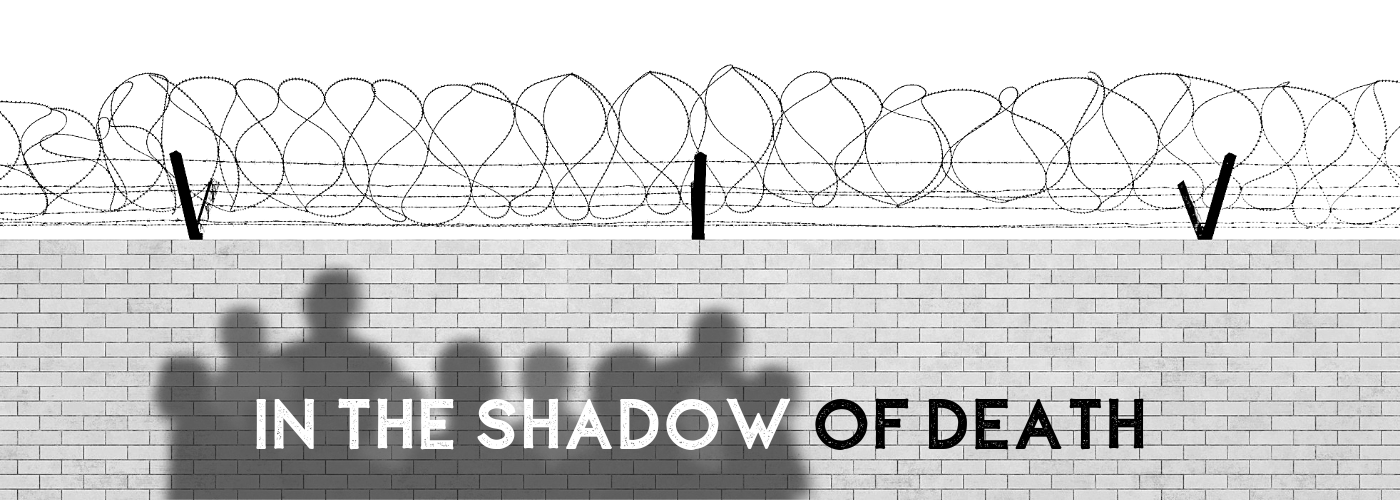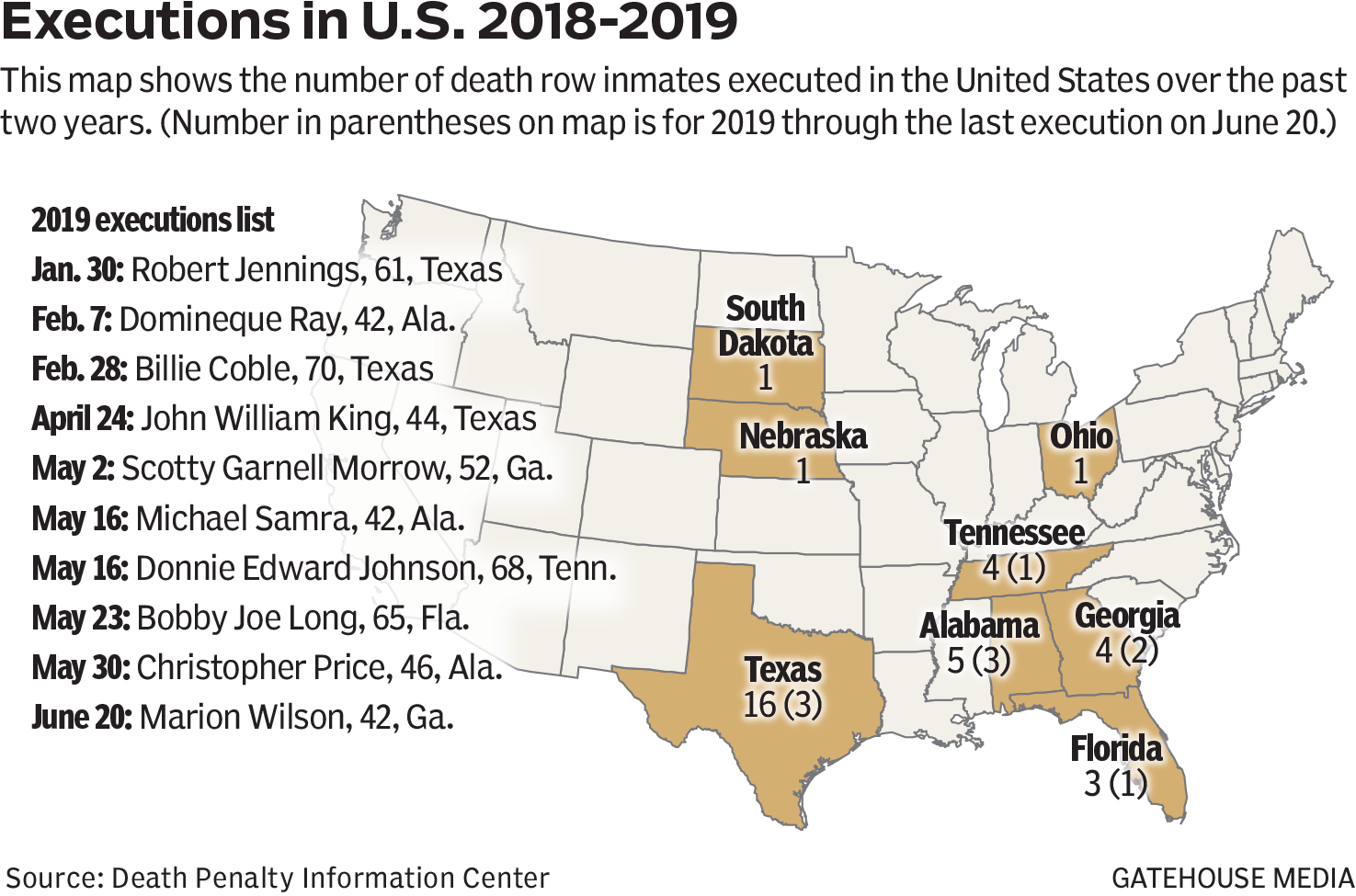
Since 1927, 9 Polk murderers have been executed.
Earl "Poker Bill" London was the first to die.
On an April day in 1927, as London continued to assert his innocence, the state took his life for killing Polk County Sheriff’s Deputy John E. Harrelson, who was gunned down four months earlier as he pursued London and an accomplice for robbing a grocery store.
Had he been convicted four years earlier, before the state assumed responsibility for all executions, London might have been hanged in the gallows at the Polk County Jail. But as it was, he became the 13th inmate statewide, and the first from Polk County, to die in Florida’s electric chair.
In the decades that followed, eight more Polk County men would die at the hands of the state — all having been convicted of murder. Seven were electrocuted; one died by lethal injection.
'In the Shadow of Death' is a yearlong series by The Ledger exploring the lives of the 14 men on death row who were convicted in Polk County, their crimes and legal cases, the death penalty itself and those affected by all of it.
• George Washington James, 54, was the 100th Florida inmate to die when he was executed Oct. 29, 1943. A jury found him guilty of gunning down Wilmon Green on Jan. 10, 1942. It was the second death warrant Gov. Spessard Holland, a Bartow native, had signed on him, according to news reports. When Holland signed the initial warrant, James’ lawyers appealed on grounds there had been no black residents in the jury pool for James’ trial, creating a bias against James, a black man. The appeal was repeatedly rejected, leading to the second death warrant. James became one of 35 inmates to be executed under Holland, who signed more death warrants than any Florida governor before or since. He served from 1941 to 1945.
• Ernest Harper, 30, was executed Sept. 6, 1948, after pleading guilty to the robbery and hatchet murder of Thomas P. Smith, a 68-year-old Winter Haven bookkeeper, in August 1947. He became the 128th inmate executed by the state when he died in the electric chair. He was a black man, like London, James and Herman Barwicks, who would die in 1956. Two more black inmates from Polk County would later die by electrocution — Daniel Morris Thomas and Willie Jasper Darden.
• Elwood North, a Lake Wales mortician, drew nationwide attention in June 1951 when he was accused of killing Betty Albritton, widow of wealthy cattleman I.W. Albritton, who had died suddenly under mysterious circumstances. She had changed her will four days earlier, naming North as the sole benefactor to her estimated $50,000 estate, and North, who recently had befriended the widow, was alone with her as she took her last breath, according to news reports at that time. He embalmed her and she was buried within four days of her death, leaving no opportunity for an autopsy and raising questions about how she died. North, 35, was quickly arrested and convicted of first-degree murder, and his lawyers’ appeals were denied all the way to the U.S. Supreme Court. North was among three inmates executed Oct. 4, 1954, and he maintained his innocence to the end.
• Herman Barwicks, the last of three inmates to die by electrocution on Feb. 20, 1956, said nothing as he calmly walked to Old Sparky, the oaken execution chair built by inmates in the 1920s. Barwicks, 28, had been convicted of killing his common-law wife, Beatrice McNeal, two years earlier.
• Daniel Morris Thomas, alleged leader of the Ski Mask Gang that terrorized Central Florida in the mid-1970s, fought for his life to the very end. Convicted in 1977 for the fatal shooting of Charles Anderson and the rape of his wife during a home-invasion robbery in Polk City on New Year’s Day 1976, the 37-year-old Thomas kicked, shouted obscenities and tried to bite the prison guards as they strapped him into the electric chair on April 15, 1986, according to reports in The Ledger. One guard pulled Thomas into a headlock as the condemned inmate fought his captors. Thomas refused his last meal, and when asked if he had any final words, he recited a lengthy statement accusing politicians of using the death penalty for their own political gain.
• Willie Jasper Darden spent 14 years on Florida’s death row and dodged five death warrants before he was executed March 15, 1988 for the death of James Carl Turman, who was shot between the eyes during a September 1973 robbery at his Lakeland furniture store. On the day he was executed, Darden’s last meal of steak and eggs went untouched, and after guards strapped him into the execution chair, Darden continued to maintain his innocence in his final statement. He said he bore no guilt and was going with a clear conscience, and he thanked those who had supported his fight for justice. He was 65.
• Phillip Atkins was executed Dec. 5, 1995, for killing his 6-year-old neighbor, Antonio "Tony" Castillo, in September 1981. At his trial in 1982, Atkins admitted to sexually molesting the boy and hitting him with a steel rod out of fear he would tell his parents about the molestation. His lawyers told jurors he had the emotional maturity of a 12-year-old child. Gov. Bob Martinez had signed Atkins’ death warrant in October, and it was set to expire at noon Dec. 5. Atkins, 40, was pronounced dead at 10:17 a.m. that morning. Atkins had told prison officials he didn’t want a last meal, and turned his back when offered a steak dinner. Instead, he drank two glasses of orange juice before entering the execution chamber.
• Eddie Wayne Davis was the first condemned inmate from Polk County to die by lethal injection when he was executed July 10, 2014. Nineteen years earlier, a jury had convicted him of kidnapping, raping and suffocating 11-year-old Kimberly Waters, his former girlfriend’s daughter, and leaving her body in a trash bin. Davis, 45, had no last words, but did eat a hearty meal earlier in the day of chopped steak with onion gravy, home fries, corn, Brussels sprouts, cherry ice cream and a Dr. Pepper. Then he spent some time with his mother and a Catholic spiritual advisor. Strapped to a gurney with his left arm extended, Davis murmured prayers as the execution team prepared for his death around him. Eleven minutes after the drugs began flowing into his veins, Davis was pronounced dead.
Since October 1924, when Frank Johnson of Duval County became the first condemned murderer to be executed by the state, 294 condemned inmates have died in Florida’s electric chair or by lethal injection, according to the Department of Corrections. Most recently, convicted rapist and serial killer Bobby Joe Long, 65, of Tampa, died by lethal injection on May 23 at Florida State Prison near Raiford, 34 years after he had been condemned to death.
Less than three weeks after Long was executed, Gov. Ron DeSantis signed his second death warrant since taking office in January, ordering the execution of serial killer Gary Ray Bowles, 57, for the 1994 murder of a Jacksonville Beach man. Bowles is scheduled to die by lethal injection Aug. 22. ⬛

Want to know when new stories are published to the series? Sign up here to get an email when we update.
Subscribe